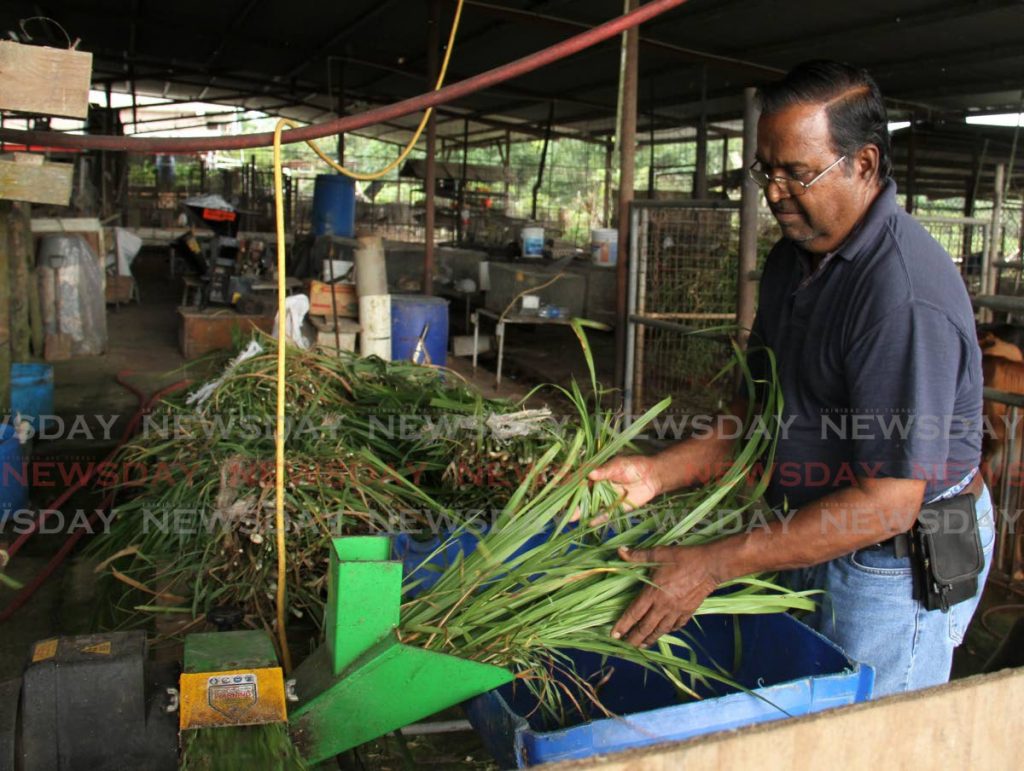Milk production in Trinidad drying up

Livestock farmers across the country are still reeling from the effects of a three-week shortage of rations for cows, goats, poultry and a sudden price increase.
These issues have caused some agro shops with a limited supply to put a cap on the amount that can be purchased.
While the sole importer, the National Flour Mills Ltd (NFM), has been able to restore the national supply to feed shops, dairy farmers, who had to resort to bulking their normal feed with rice bran and other products, have reported a decrease in the quality of milk produced by their cows.
Industry records show that farmers were producing as much as 13 million litres in 1995-2000 but production has declined to about one million litres a year from about 100 or so remaining dairy farmers and are no match for the big milk importers.
Sam Ogiste, 67, of Wallerfield, who has been in the business for just over half a century, said the feed shortage has been easing up but admitted that the quality of his milk had been affected as he had to use other products to feed his herd of 40 cows.
Ogiste said Wallerfield – one of the four main areas where dairy farming was introduced in the 1960’s – was no longer a haven for dairy farmers with only 11 left, mainly because of the high production and labour costs.
Third-generation farmer Satish Heera said some dairy rations went up by $10 a bag and to feed the 80 cows on his family’s farm in Carlsen Field they buy in excess of 100 bags weekly. Heera said the feed shortage forced them to use more grass and corn stalks to feed the animals.
“We were only able to get 10 bags of feed a week at one point,” Heera said as desperation set in to feed animals their daily nutrients.
Another established Carlsen Field farmer Mahadeo Bholai who got into dairy farming two decades ago after retiring as a transport contractor rears ducks, rabbits, chicken, tilapia, sheep and cows at his 19 and a half-acre farm.
“You cannot buy a Prado from this line of work,” he said, as out of every dollar earned 90 cents and sometimes more have to go back into the animals.
To make ends meet, Bholai sells a two-litre of pasteurised milk at the farm gate for $25, bags of cow manure at $35 a bag, and the other animals, like ducklings to supplement his income.
Bholai said he began to experience a shortage in dairy rations about a month ago and this affected his milk production. He said it was important to feed the animals the correct mineral mixture to get the maximum production.
Bholai any change to diets of the animals needed time to be corrected before he can once again get the maximum amount of milk.
Feed shortage, high production and labour costs affect industry
Swiss-based company, Nestle is the main buyer of bulk milk from dairy farmers who get $2.35 per litre and a subsidy of $1.50 per litre from the State. Many dairy farmers say they have had to supplement their income to survive and cannot hire full-time workers because of the additional costs.
Bholai said on average his cows produce eight litre of milk a day and knew about some farmers who were able to get as much as 14 litres from each cow a day. He said it usually took about 15 years to build a herd from good genetics.
Bholai has cross-bred Holstein, a top milk-producing cow, with Guernsey, from the Isle of Guernsey, which is smaller but is more adaptable to the tropics.
He knows each of his cows by names and, without any guidance, they walk into the milking area twice a day in their own hierarchy to help fill the stainless steel churns.
For Andy Wears, who only recently established a farm in the Carlsen Field area, as work in the construction industry slowed during the pandemic, he was grateful to farmers like Bholai who willingly shared their knowledge to help him deal with challenges.
“It is only because of my relationship with established farmers I was able to survive,” he said.
Wears, who rears five goats and 30 layers, said he had been experimenting with different pellets and rations to feed his animals and had even planted a crop of corn for them,
“We have to find a way to feed the animals because the animals don’t know it have a feed shortage,” he said.
The NFM had admitted to a shortage of some animal feed due to several factors, both international and local.
NFM, like the other two local feed suppliers, imports raw materials for producing feed.
In a statement, the company said corn and soybean meal are brought directly from international suppliers, and wheat middling is produced as a by-product of flour production.
Owing to an extraordinarily high demand emanating from China, it said, there have been shortages of corn and soybean meal. This resulted in the unavailability of loading capacity at the ports in supplier countries and a three-to-four-week delay in shipments to TT and neighbouring countries.
Additionally, the cost of corn, soybean meal and wheat have also risen significantly in the last two months, the company said.
“These delays have led to the unavailability of some feed products on the local market,” the release said. “NFM is working to meet market demands. However, it is unable to fulfil all of the additional demands as a result of other local feed producers’ inability to produce their normal quantities.”
The release said feeds which are heavily dependent on middling have also been affected, as demand is outstripping the usual supply from flour production.
By mid-January, the company was able to bring on more supplies which are still filtering to agricultural shops across the country.


Comments
"Milk production in Trinidad drying up"